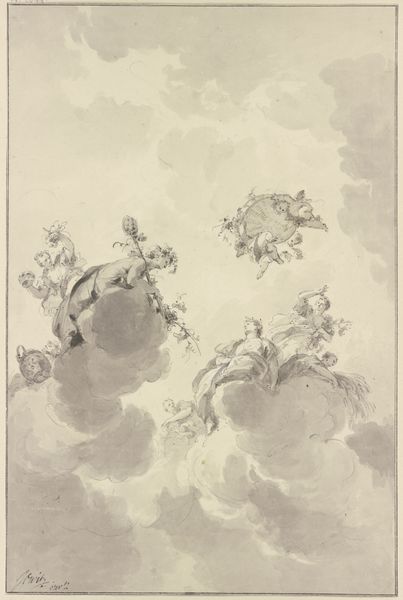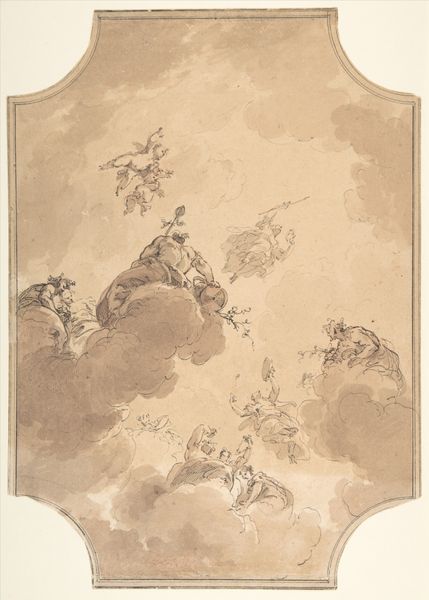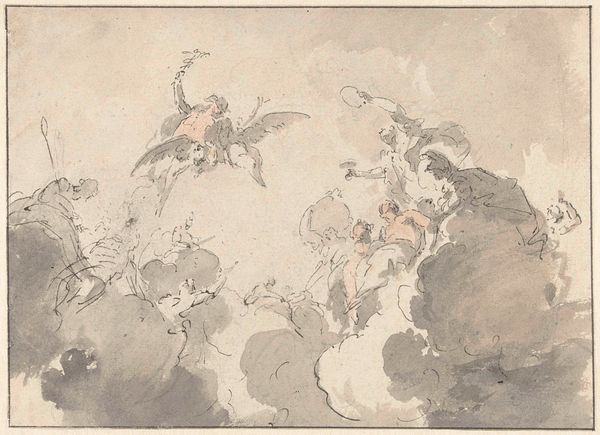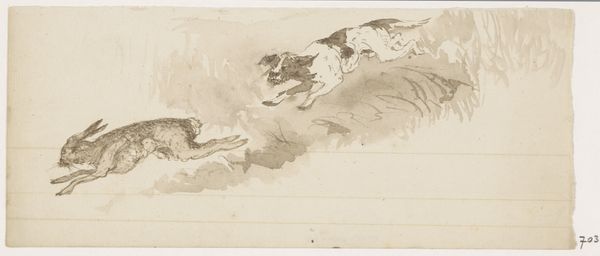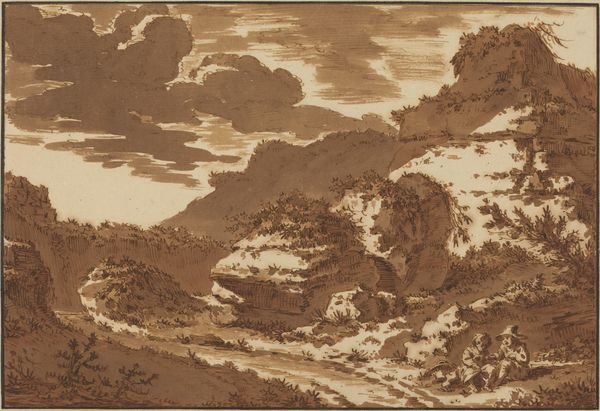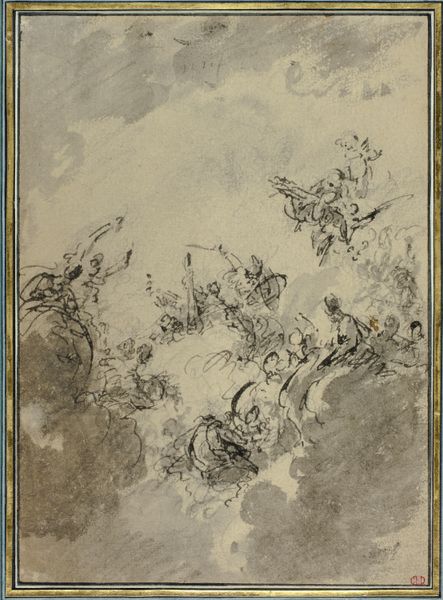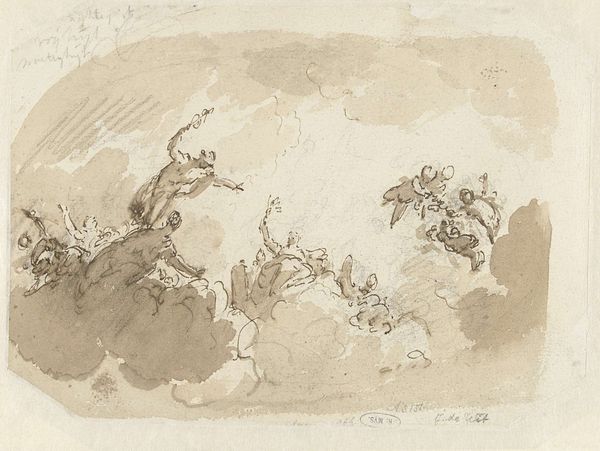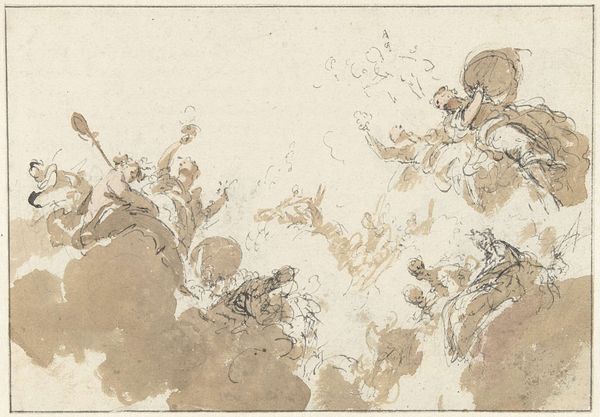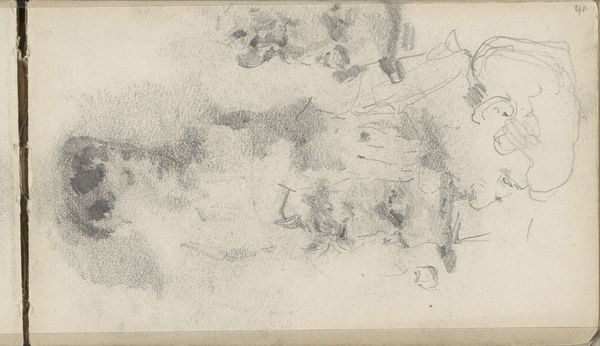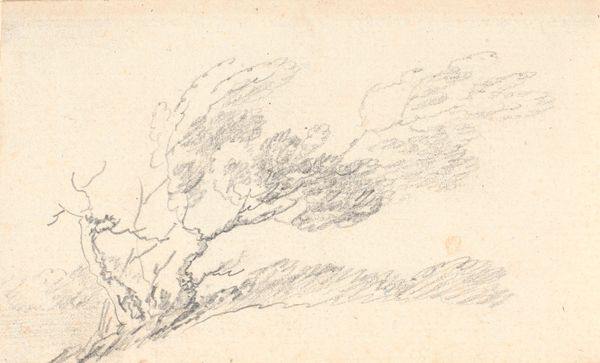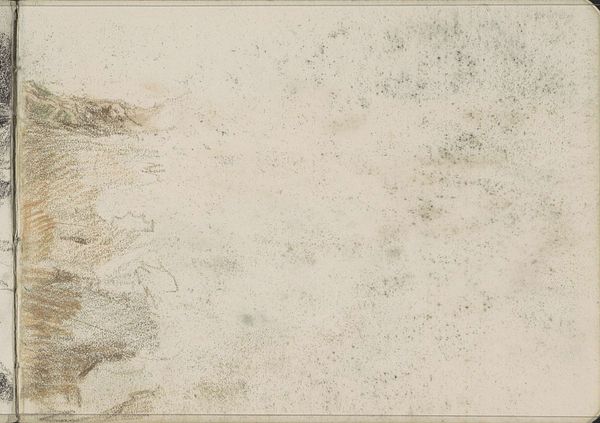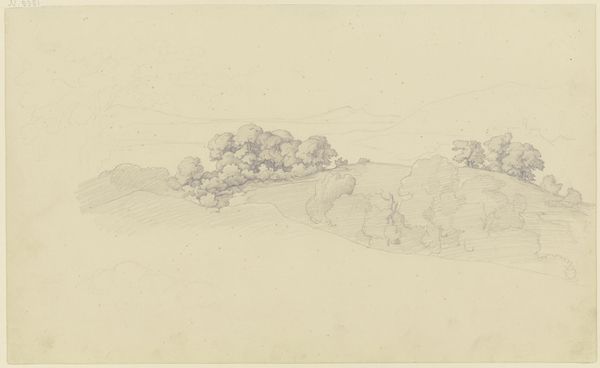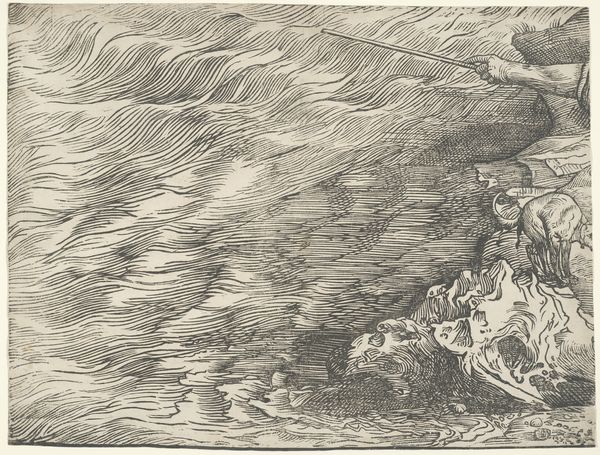
drawing, pencil
#
drawing
#
allegory
#
baroque
#
pencil sketch
#
figuration
#
form
#
pencil
#
15_18th-century
#
history-painting
Copyright: Public Domain
Editor: Here we have a drawing titled "Bacchus, Ceres und Flora mit Gefolge in Wolken schwebend." It's attributed to Jacob de Wit. From what I can tell, it's a pencil sketch, possibly a preliminary study for something larger. There’s a lightness to it, with figures floating on clouds. What do you see in this piece? Curator: The composition certainly emphasizes a sense of upward movement, doesn't it? Observe how the figures are arranged, primarily within the upper register of the pictorial space. This compositional strategy encourages the eye to travel upwards. Notice also the subtle gradations of light and shadow, achieved through the artist's skilled use of pencil. The chiaroscuro effect contributes to the overall sense of depth and volume. Editor: Yes, I can see that now, how the shading gives the clouds and figures volume. Is that the most important thing here, how the artist used pencil to create depth? Curator: Form, line, tone, and the ways in which the artist exploits them are indeed very important. I also see in this the artist's skillful articulation of form. Note, for example, how the drapery clings to and defines the contours of the figures, contributing to a sense of classical elegance. De Wit clearly manipulates the visual elements to construct a visually pleasing composition. What are your thoughts? Editor: I was so focused on the figures themselves; I almost missed how important the artist’s rendering of them really is. It’s a good reminder to look closely at those elements. Thanks. Curator: Indeed. By considering the formal elements and their orchestration, we unlock new layers of meaning within the artwork.
Comments
No comments
Be the first to comment and join the conversation on the ultimate creative platform.
